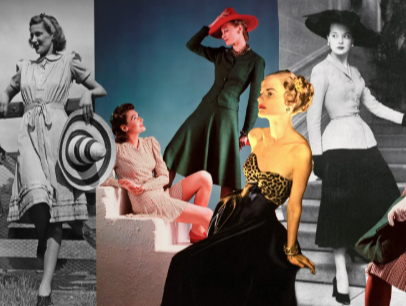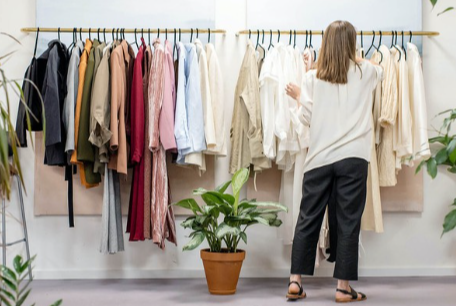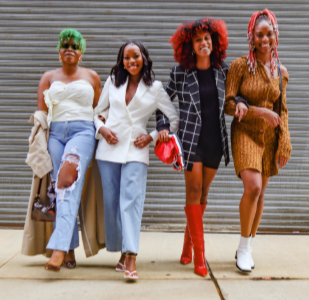The Impact of Technology on the Fashion Industry
The fashion industry undergoes a significant transformation driven by technology. Digital tools enhance design collaboration and consumer interaction. E-commerce platforms redefine shopping experiences, while innovations like virtual fitting rooms reshape customer engagement. As sustainability becomes paramount, brands explore innovative materials and practices. This evolving landscape raises questions about the future of fashion. Will technology continue to shape ethical standards and creativity, or will it lead to unforeseen consequences? The answers lie ahead.
The Evolution of Fashion Design Through Technology
As technology continues to advance, the fashion design landscape undergoes a profound transformation, reshaping creative processes and production methodologies.
Digital design now serves as the foundation for innovative pattern innovation and tech-driven aesthetics. Fashion software facilitates seamless design collaboration, allowing creators to explore ideas in real-time.
AI integration enhances decision-making, predicting trends and optimizing resources for sustainability. The rise of wearable technology pushes the boundaries of traditional fashion, merging functionality with style.
Virtual prototyping and 3D modeling revolutionize the design cycle, enabling designers to visualize garments before production, thereby minimizing waste.
Fashion simulations offer an immersive experience, allowing designers to experiment with textures and colors, ultimately fostering a liberated, experimental approach to fashion design that embraces technology’s limitless potential.
E-Commerce Revolution: The New Shopping Experience
The integration of technology in fashion design has paved the way for a significant transformation in the shopping experience, marking the onset of an e-commerce revolution.
This evolution is characterized by mobile shopping, allowing consumers to access virtual marketplaces anytime, anywhere. Brands are increasingly adopting omnichannel retail strategies, blending online and offline experiences to enhance customer engagement.
Advanced payment technologies streamline transactions, while innovative shopping apps facilitate seamless browsing. Online fitting solutions empower customers to visualize apparel within their digital wardrobes, enhancing confidence in purchases.
As the e-commerce landscape expands, the focus shifts to delivering an exceptional customer experience, catering to the desires of a freedom-seeking audience that values convenience, personalization, and choice in their shopping journey.
Social Media’s Role in Fashion Marketing
In the evolving landscape of fashion marketing, social media has emerged as a powerful catalyst for brand engagement and consumer interaction.
Influencer marketing strategies, coupled with user-generated content trends, are reshaping brand narratives, while visual storytelling techniques enhance the emotional connection between consumers and collections.
This dynamic interplay not only drives sales but also redefines the authenticity and accessibility of fashion in the digital age.
Influencer Marketing Strategies
How has social media transformed the landscape of fashion marketing through influencer strategies? The rise of influencer partnerships has revolutionized brand collaborations, allowing fashion labels to authentically engage with diverse audiences.
By leveraging content authenticity, brands align their messaging with social responsibility, appealing to conscious consumers. Influencers facilitate niche targeting, connecting with specific demographics and enhancing campaign effectiveness.
Additionally, platform diversification enables brands to tailor their strategies across various social media channels, optimizing audience engagement. Performance metrics now assess the impact of these collaborations, ensuring that marketing efforts resonate with contemporary trends.
As fashion marketing evolves, influencers remain pivotal in shaping consumer perceptions and driving brand loyalty, making it essential for brands to adapt and innovate continually.
User-Generated Content Trends
As social media platforms continue to evolve, user-generated content (UGC) has emerged as a transformative force within fashion marketing, enabling brands to harness the creativity and authenticity of their audiences.
UGC not only fosters content authenticity but also enhances brand engagement through user reviews and personal storytelling. This trend encourages user creativity as consumers participate in fashion challenges, showcasing their unique styles and interpretations.
The diversity of platforms allows for community building, where followers exchange ideas and inspirations, further enriching the fashion narrative. Brands that embrace UGC benefit from increased trend participation, tapping into the collective voice of their audience, which ultimately drives a more inclusive and dynamic fashion landscape that resonates deeply with consumers.
Visual Storytelling Techniques
While the rise of social media has reshaped communication, its influence on fashion marketing is particularly pronounced through the implementation of visual storytelling techniques.
Brands increasingly harness visual narratives and digital aesthetics on storytelling platforms, crafting immersive experiences that resonate with audiences. Conceptual visuals and fashion films serve as powerful tools for brand storytelling, allowing consumers to connect emotionally with the narrative behind each collection.
The integration of visual merchandising and multimedia campaigns enhances this engagement, creating a cohesive brand image across various channels. This innovative approach not only captivates viewers but also empowers them, fostering a sense of freedom in expression and identity.
As the fashion landscape evolves, these visual storytelling techniques will undoubtedly shape the future of marketing strategies.
Innovative Materials and Sustainable Practices
The fashion industry is witnessing a transformative shift as innovative materials and sustainable practices gain prominence.
Eco-friendly fabric innovations and the integration of 3D printing technology are redefining production processes, enabling brands to reduce waste and enhance customization.
This evolution not only addresses environmental concerns but also reflects a growing consumer demand for responsible fashion choices.
Eco-Friendly Fabric Innovations
A significant shift is occurring in the fashion industry as designers increasingly embrace eco-friendly fabric innovations that prioritize sustainability.
This movement highlights the rise of biodegradable textiles and organic fibers, which are reshaping consumer perceptions. Sustainable dyeing techniques further enhance these efforts, utilizing eco-conscious production methods that minimize environmental impact.
The integration of recycled materials into new collections exemplifies a commitment to circular fashion, where products are designed with their lifecycle in mind.
Moreover, plant-based fabrics sourced from renewable resources offer an alternative to conventional materials, aligning with a growing demand for ethical choices.
This innovative approach not only fosters creativity but also empowers consumers to make responsible decisions, ultimately redefining the future of fashion through sustainability.
3D Printing in Fashion
As technology continues to advance, 3D printing is revolutionizing the fashion industry by introducing innovative materials and sustainable practices that challenge traditional manufacturing methods.
This technology enables sustainable design by reducing waste and promoting rapid production, allowing brands to prototype and iterate designs swiftly.
Customization technology empowers consumers to express individuality, fostering a new era of design accessibility.
The intersection of 3D printing with wearable tech enhances functionality while supporting artistic expression.
Material innovation plays a critical role, as designers experiment with eco-friendly composites and textiles, pushing the boundaries of fashion scalability.
Ultimately, 3D printing not only redefines the production landscape but also aligns with the growing demand for sustainable practices, paving the way for a more conscientious future in fashion.
Customization and Personalization in Fashion
While technological advancements continue to reshape various industries, the fashion sector has experienced a profound transformation through customization and personalization.
The integration of AI recommendations and personalization algorithms enables brands to offer tailored experiences that resonate with individual fashion preferences. Interactive shopping platforms allow consumers to engage in online quizzes, developing style profiles that reflect their unique styles.
This data-driven approach harnesses customer feedback and consumer insights to create bespoke designs and limited editions, fostering a sense of exclusivity. As a result, the fashion landscape evolves, empowering consumers to express their individuality while brands adapt to emerging trends.
This shift towards personalized offerings not only enhances customer satisfaction but also drives brand loyalty in an increasingly competitive market.
The Rise of Virtual Fashion Shows
How has the fashion industry adapted to the digital age? The rise of virtual fashion shows exemplifies this transformation, creating immersive runway experiences that captivate a global audience.
These technology-driven presentations leverage interactive viewing platforms, enhancing digital audience engagement through real-time participation and feedback. Brands are embracing innovative storytelling techniques, allowing for an evolution in artistic expression that transcends traditional formats.
By embracing global accessibility trends, designers can reach diverse communities, fostering online community participation. This shift not only democratizes fashion but also redefines audience interaction dynamics, inviting viewers into the creative process.
As virtual experiences become the norm, the fashion industry is poised to further explore the endless possibilities of technology-driven creativity, reshaping the future of fashion.
Augmented Reality and Virtual Try-Ons
Augmented reality and virtual try-ons are revolutionizing the shopping experience by allowing consumers to visualize clothing in a digital space before making a purchase.
This technology not only enhances customer satisfaction but also significantly reduces return rates, addressing a long-standing challenge in the fashion industry.
Furthermore, it effectively bridges the gap between physical and digital retail, creating a seamless integration that caters to the evolving preferences of modern shoppers.
Enhanced Shopping Experience
In recent years, an increasing number of fashion retailers have embraced augmented reality (AR) and virtual try-on technologies to transform the shopping experience.
These innovations enable customers to enjoy immersive experiences through digital fitting rooms and smart mirrors, allowing them to visualize clothing in real-time.
Mobile apps equipped with AI chatbots and virtual assistants offer personalized recommendations, enhancing the interactive nature of shopping.
Additionally, shopping gamification engages consumers, making the process both fun and rewarding.
The integration of contactless payments streamlines transactions, while real-time inventory updates ensure that shoppers have access to the latest stock.
Collectively, these advancements not only elevate the customer journey but also empower consumers to make informed choices in a dynamic retail landscape.
Reducing Return Rates
The integration of augmented reality (AR) and virtual try-on technologies is proving to be a game changer in reducing return rates in the fashion industry. By allowing customers to visualize how clothing fits and looks on their own bodies, AR enhances the online shopping experience and empowers buyers to make informed decisions.
Size recommendation technology further complements these innovations, providing tailored suggestions based on individual measurements and preferences. Additionally, customer feedback integration plays a vital role, as brands can gather insights on fit and satisfaction, refining their offerings.
This dynamic combination not only fosters consumer confidence but also significantly mitigates the common issue of returns, promoting a more sustainable approach to fashion consumption.
Bridging Physical-Digital Gap
A transformative shift in consumer engagement is occurring within the fashion industry as augmented reality (AR) and virtual try-on technologies bridge the physical and digital divide.
These advancements foster immersive experiences, allowing shoppers to explore digital fashion and engage in virtual fittings without leaving their homes. Online boutiques leverage interactive displays, creating hybrid shopping environments where seamless transitions between the physical and digital worlds become a reality.
This technology integration not only enhances customer satisfaction but also cultivates digital wardrobes tailored to individual preferences. Augmented experiences empower consumers with the freedom to visualize their desired styles, ultimately revolutionizing the way they interact with fashion.
As these innovations continue to evolve, the future of retail promises unprecedented possibilities for both brands and buyers alike.
Supply Chain Management and Efficiency
Transforming supply chain management, technology has become a pivotal force in enhancing efficiency across the fashion industry.
Supply chain optimization now hinges on technology integration, allowing for sophisticated inventory management and real-time tracking. Automated processes streamline operations, reducing lead times and costs.
Predictive analytics empower brands to anticipate market demands, fostering agile responses and vendor collaboration. Enhanced data transparency facilitates logistics improvement, enabling stakeholders to make informed decisions that promote sustainable sourcing practices.
As companies embrace these innovations, they unlock the potential for greater flexibility and resilience. The result is a fashion ecosystem that not only meets consumer demands but also aligns with the growing imperative for ethical and sustainable practices, revolutionizing the industry’s operational landscape.
Data Analytics in Trend Forecasting
While traditional methods of trend forecasting often relied on intuition and past experiences, data analytics has revolutionized this process within the fashion industry.
By leveraging predictive modeling, fashion brands can analyze vast amounts of data to identify emerging trends and shifts in consumer behavior. This analytical approach allows designers and marketers to anticipate demand more accurately, aligning their collections with the desires of their target audience.
Insights drawn from social media, online shopping patterns, and demographic data empower fashion stakeholders to make informed decisions, fostering creativity while reducing the risk of overproduction.
Ultimately, data-driven trend forecasting liberates the industry from guesswork, enhancing its responsiveness and adaptability in an ever-evolving marketplace.
The Future of Fashion: Predictions and Possibilities
How will the fashion industry evolve in the coming years amidst rapid technological advancements and shifting consumer preferences?
The future promises a transformative landscape where sustainable fashion takes precedence, driven by digital craftsmanship and AI design. Wearable technology and smart textiles will redefine functionality, offering consumers innovative, eco-friendly options.
Virtual influencers could reshape marketing strategies, creating more personalized connections with audiences. Fashion tech will enhance fashion accessibility, allowing diverse consumers to curate digital wardrobes tailored to their unique styles.
As fashion forecasting evolves with advanced analytics, brands will align more closely with consumer desires, ensuring relevance in a dynamic market.
Ultimately, the convergence of technology and creativity will foster a vibrant, inclusive future for the fashion industry.
Conclusion
As technology continues to weave itself into the fabric of the fashion industry, a serendipitous intersection emerges where creativity meets efficiency. The rise of digital tools and data-driven insights forms a vibrant tapestry, enabling brands to anticipate trends and foster deeper consumer connections. Coinciding fashion with innovation, this evolution not only enhances sustainability but also paves the way for a personalized shopping experience. Ultimately, the future of fashion gleams with potential, shaped by the harmonious collaboration of artistry and technology.




